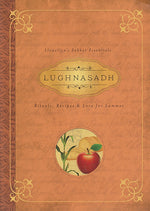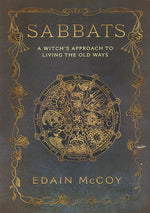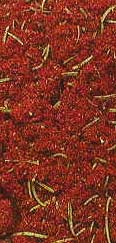The Sabbat of Lammas/Lughnassadh (August 1)
Karen Charboneau HarrisonShare
© Copyright 2005-2023 Karen Charboneau-Harrison, All Rights Reserved.
The name LAMMAS comes from the Anglo-Saxon Hlaf-maesse meaning ‘bread-mass’. Another name for this Sabbat is Lughanssadh, meaning the Feast or Games of Lugh. Lammas is the time of the first harvest of the grain, a time of thanksgiving for the first harvesting of the fruits of summer. Traditional at this time is the celebration and sharing of the products of the first grains: bread and ale. In ancient Celtic, Gaelic and Pagan tradition, the grains of the Earth are seen as the body of the God, sacrificed at the Harvest, baked into bread and then consumed to keep the tides of life flowing. Many times the first loaf will be made into the shape of a man to represent the God or long loaves to symbolize his regenerative powers. The first summer fairs begin, often continuing through the Autumn Equinox, as the months of August and September together comprise the time of thanksgiving and rejoicing in the abundance of grain, fruits, produce and the health of our herds – all of which will provide food to see us through the barren winter. At the fairs, we still show off and have contests for the best vegetables, the most vigorous of animals just as we have for hundreds of years.
The themes of Lammas are those of Celebration, Thanksgiving and Sacrifice. The Sun was at its height of its power at the Summer Solstice and since that time nights have become longer and cooler – we know that Winter in coming even as we are surrounded by plenty. We celebrate the abundance, we give thanks for the food which ensures our survival and we must sacrifice the fruits of the harvest in order to continue living. At Beltane the God and Goddess made love, at the Summer Solstice this union of male/female; light/dark; sun/moon; fire/water is celebrated and we know that the Goddess is fertile with the God’s seed. At Lammas, we give thanks and sacrifice the body of the fertilizing, life-giving God by harvesting the grain, releasing Him to care for the souls of our ancestors in the Otherworld, knowing that at the Winter Solstice the new Sun-god will be born and the cycle will begin anew.
One of the names of the Sun-god who gives life is Lugh, who is the son of Arianhod, Goddess of Death. This shows us the paradoxical Pagan world view: opposites are components of one another – life comes from death, light from darkness, dawn from night. Everything is interconnected and dependent on that connection. When the grain is cut to make bread, this is a sacrifice of life, but so that life may continue. On August 1, the games or festival of Lugh, celebrating the life-giving powers of the Sun are celebrated. Picnics, sharing of the harvest and outdoor games of physical prowess and strength are played.
The Corn Dolly is a traditional Harvest altar decoration for Lammas which is fun and easy to make. Remove the green husk leaves from an ear of corn. Line up the straight ends and tie tightly together with string. Holding the tied ends up, drape the green leaves down around the tied ends, arranging evenly on all sides. Tie in the center with a stray piece of corn husk. You have created the torso and skirt of the Corn Dolly. Fluff out the skirt then create arms and the head by poking about 5 or 6 long corn leaf husks horizontally through the top of the torso under the ‘shoulders’ so that they extend out on either side. Take the bottom 2 husk ends on each side and twist to make arms. Cut the ends to even them out. Take the remaining husk leaves and bring them up over the top of the shoulders. Twist tightly together, then bend them in the center over toward the body. Tie to create the neck and tuck any loose ends into the shoulders. Fluff the head out slightly to round it. You can bless your Corn Dolly on your Lammas Altar to bring you plenty and luck throughout the rest of the year, then save it to grace your mantle during the winter months. At Candlemas, the Corn Dolly can be burned during your purification rites to release any negativity experienced by your family thus leading to new growth in the Spring.
A very appropriate chant for Lammas is known as Hoof and Horn. The words are as follows (and can be sung to the same tune as “We All Come From the Goddess”):
Words to “We All Come from the Goddess” (in case you don’t know them)
| Recommended Products | |
 Lughnasadh Lughnasadh |
 Sabbats Sabbats |
 Lughnassadh Incense Lughnassadh Incense |
 Lughnassadh Oil Lughnassadh Oil |
